The garden has deep roots in human beings’ evolving sociocultural imaginary. We have created and been around gardens for thousands of years—and the nature of and within these gardens shift and change depending on needs, ideas, and priorities. Gardens—like the works in this volume—form part of the stories we tell about ourselves.
One morning before school, my father hurriedly interrupted my sister and me at the breakfast table, with a look of mischief in his eye, and an instruction to follow him, quickly and quietly, into the garden.1 It was a relatively chilly morning, at least by the standards of generally sunny and temperate Johannesburg. Our morning routines were usually quite rushed, so my father’s slow and deliberate steps from the front door to the far side of the house, us following in eager anticipation and confusion, disrupted the rhythm of the weekday mundane. Our house was located in a relatively newish suburb, somewhat on the periphery of this ever-expanding city. We had wild veld2 growing on neighbouring undeveloped plots and on the roadsides. It was not uncommon to see snakes and meerkats on our walks around the adjacent koppies,3 and hadedas were frequent visitors on our suburban lawn. Lizards sunning themselves on rocks and the odd translucent gecko on our bedroom ceiling (not to mention other critters like rain spiders who would seek respite indoors after a thunder shower) were not unusual curiosities. But these were paltry sightings in comparison with what was waiting for us under the exposed, creosoted eaves of our clay-tiled roof.
 Tip-toeing, we caught up to my father: one finger placed on his mouth, with his other hand pointed to the under-hang. The square root of his gesture invited our gaze to follow it upwards, but it took some time for our eyes to adjust to the jarring chiaroscuro: the dimness of the roof under-hang set against the brightness of the early morning highveld sky. Eventually, the silhouette of a medium-sized furry creature came into focus. Slowly, spots started to develop, and I began to make out dark eyes and a black nose encircled by a pinch of white snout. A bushy striped tail accentuated its curled body, which was nestled quite comfortably in the rather awkward right angle made by the wall stud and the wooden strut of the eave. Its eyes were steadily trained on us: a genet! It was both exquisite and ordinary, reminding us of the wild edges of our city. It was both the first and last genet to visit our house—at least to our knowledge—but the memory, almost three decades later, is still angular and distinct.
Tip-toeing, we caught up to my father: one finger placed on his mouth, with his other hand pointed to the under-hang. The square root of his gesture invited our gaze to follow it upwards, but it took some time for our eyes to adjust to the jarring chiaroscuro: the dimness of the roof under-hang set against the brightness of the early morning highveld sky. Eventually, the silhouette of a medium-sized furry creature came into focus. Slowly, spots started to develop, and I began to make out dark eyes and a black nose encircled by a pinch of white snout. A bushy striped tail accentuated its curled body, which was nestled quite comfortably in the rather awkward right angle made by the wall stud and the wooden strut of the eave. Its eyes were steadily trained on us: a genet! It was both exquisite and ordinary, reminding us of the wild edges of our city. It was both the first and last genet to visit our house—at least to our knowledge—but the memory, almost three decades later, is still angular and distinct.
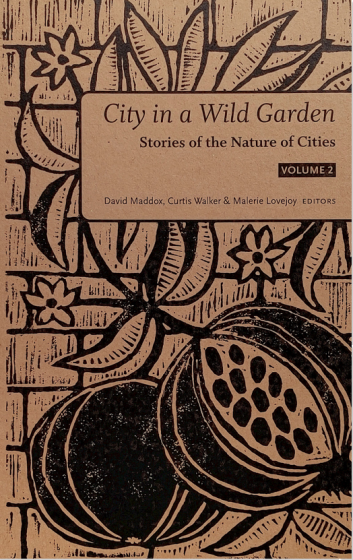 It seemed unusual then, to come upon a genet in our suburban garden—even though they are relatively common to the region. Our wonder that morning might sound especially strange to readers outside South Africa. It’s a well-worn trope that locals poke fun at foreigners who think that lions and giraffes freely roam the streets (they don’t). Growing up in Johannesburg meant that our exposure to wild animals had been reserved for trips to the zoo and game drives in the bush (the latter, far outside city limits). In fact, our city upbringing was a source of constant mirth in the family: at a tender age, my sister, upon witnessing our Italian grandmother gathering fresh tomatoes from her vegetable garden, commented on the strangeness of this enterprise. Her mother’s tomatoes came packaged in a box from the grocer (as though the provenance of both sets of tomatoes were materially different). The store produced the tomatoes, did it not, so why did Nonna need to toil in the garden to get hers?
It seemed unusual then, to come upon a genet in our suburban garden—even though they are relatively common to the region. Our wonder that morning might sound especially strange to readers outside South Africa. It’s a well-worn trope that locals poke fun at foreigners who think that lions and giraffes freely roam the streets (they don’t). Growing up in Johannesburg meant that our exposure to wild animals had been reserved for trips to the zoo and game drives in the bush (the latter, far outside city limits). In fact, our city upbringing was a source of constant mirth in the family: at a tender age, my sister, upon witnessing our Italian grandmother gathering fresh tomatoes from her vegetable garden, commented on the strangeness of this enterprise. Her mother’s tomatoes came packaged in a box from the grocer (as though the provenance of both sets of tomatoes were materially different). The store produced the tomatoes, did it not, so why did Nonna need to toil in the garden to get hers?
Following that morning with the genet, anything now seemed possible. The city was alive with possibility. For weeks afterwards, I would pay careful attention to the margins of our garden and home. I’d find my eyes flitting to the nooks and crannies of the roof, and when playing outside, any movement seemed to promise a break from suburban monotony. During the school-run, my eyes would be trained on the roadside, scanning the edges of brush, as though willing another surprise into existence. I am not entirely sure what I was hoping to see: a mongoose scampering between traffic? A duiker slipping between the trees? Perhaps, if I was lucky, a porcupine hobbling over a rocky outcrop near the golf course? Unfortunately for me, these ideations remained mere flights of fancy.
 Eventually, my attuned gaze began to soften, and I stopped searching the wild borders of our city. Yet, just when the excitement of that one school morning threatened to fade away, and slip off the corners of my memory, a tortoise surfaced in our back yard. This was even more impressive than the genet’s arrival. How did it get there!? After all, it takes a rather agile creature to negotiate a six-foot perimeter wall topped with barbed wire! It remains a cheerful mystery to this day.
Eventually, my attuned gaze began to soften, and I stopped searching the wild borders of our city. Yet, just when the excitement of that one school morning threatened to fade away, and slip off the corners of my memory, a tortoise surfaced in our back yard. This was even more impressive than the genet’s arrival. How did it get there!? After all, it takes a rather agile creature to negotiate a six-foot perimeter wall topped with barbed wire! It remains a cheerful mystery to this day.
I hope you can forgive this foray into personal anecdotes, but the theme of this year’s The Nature of Cities flash fiction competition—“the city in a wild garden”—summoned these childhood memories, where lines between city, garden, and wilderness were momentarily blurred. The memory of the genet and the tortoise work to remind me that cities should not, and are not, divorced from the surrounding natural world. Cities are part of ecosystems. A harmful history of anthropocentrism is largely to blame for thinking of cities and nature as antinomies. “The city in a wild garden” invites a radical reimagining of the city. Instead of maintaining so-called neat boundaries between city and nature, here the city— through this theme—situates urban space within nature, hybridising the urban and destabilizing the scope and dimensions of what we have come to think of as city space. It is trenchant, too, that the garden is imagined as a wild space—not a manicured or heavily cultivated zone of human interference. It thus normalizes the wild garden as a feature of city space—not something relegated to the country or undeveloped land on the outskirts of the city. The notion of a garden as wild actively subverts the etymology of the word “garden,” which originally signalled an “enclosure” or that which was “fenced-in.”
Entrants were asked to write short stories with a target length of 750-words or less, set in the present or future (either near or distant), and inspired by this phrase, “city in a wild garden.” In keeping with The Nature of Cities’ focus on greener cities for the benefit of both people and nature, the stories themselves needed to feature the following three components: cities, nature, and people. As part of the brief, writers were asked to imagine cities “in which nature and people co-exist, cities in which the relationships between the human-made and the natural are imagined differently.” The competition’s entry guidelines were otherwise quite expansive and invited stories from a range of genres from science fiction to magical realism, inviting narratives that contemplated food security, climate change, wild nature, love stories, and utopian visions of green cities. The call received over 1000 submissions, from an impressive array of countries (101 in total). Two rounds of adjudication then commenced. The first round (consisting of almost one hundred judges) whittled the number of stories down to 150 submissions. This longlist was then forwarded to an executive committee of thirteen jurists, who ultimately settled on six prize-winning stories and a total of forty-nine entries (from twenty countries) which are collected in this book.
The collection, City in a Wild Garden, boasts a diverse array of gardens and types of gardeners. We find:
kitchen gardens and vegetable gardens;
unkempt, wild, and overgrown gardens;
suburban gardens and neighbourhood gardens;
balcony gardens, vertical gardens, and rooftop gardens;
Botanical gardens, animalled city-gardens;
people turning into gardens;
watchful gardens;
urban guerilla gardens;
… and war-torn gardens.
There are gardeners, old and young;
radical gardeners;
and potential gardeners (equipped with seed banks);
climate-change–combating gardeners;
people who plant gardens to remember;
and gardeners who are both plant and planter.
Ari Honarvar, from San Diego, penned the winning entry, “The Pomegranate Tree,” which follows a nine-year-old child in Pakistan, who helps her father finish smoking the last drags of cigarette in a drone-attack–ravaged garden. The titular tree bears no fruit as a result of the toxic debris caused by exploding ordnances. When the little girl thoughtlessly crushes an ant with a rock, her father allegorizes the garden’s ant colony as a means of developing her empathy for other living things. This poignantly throws into stark relief the inhumanity of the war being waged around them.
In second place, we had two prize winners. The first story, Rahul Kanvinde’s (Mumbai), “Monkey Business” is set in Delhi and presents an amusing postcolonial adaptation of the “dog ate my homework” ruse but now with the added benefit of promoting environmental justice: a bureaucrat plants bananas strategically across offices in a government building so that a monkey takes off with an important government file, which (not so accidentally) helps to thwart a deforestation plan. The other second-place prize was won by Bostonian, Jonathan Bronico with a story entitled, “Plua Koroa.” Bronico’s narrative celebrates traditional ecological knowledge: a mother uses plants for medicinal purposes, presenting an effective critique of the narrative’s Panamanian decree that forbids the cutting and foraging of wild plants.
Tied for third-place prizes were Heidi Ball for “Pomegranate Heights” (a charming love story about food security and fecund balcony gardens), C.Y. Ballard’s “The City Incarnata” (which imagines a dryad, who, through urban-wide rhizomes, pollinates her city), and Fernanda Castro’s haunting “Passing Season” (where every year skyscraper walls disappear and migratory birds pass through, unfettered by glass and concrete; yet, with this “passing season”, a grandmother and child observe the event together for the very last time).
Gardens in the collection are polysemic and teeming with potential. The multiplicity and variety of gardens on display rub away at the obdurate edges of brutalist skyscrapers, and call for reflection amidst humans’ capacity for both destruction and renewal. Many hands shape these narrative gardens. These can be complicated and heterogenous spaces; this rings true for this collection, and for us, as readers, who see this in our lived experiences of reified, physical gardens. Gordon Campbell writes in Garden History: A Very Short Introduction4 that “gardens are living creations that never stand still” and likens them to the flux doctrine, articulated through Heraclitus’s River: “one cannot step into the same river twice; the same might be said of gardens” (4).
Gardens are thus extremely variegated in form and function. The humble vegetable garden satisfies alimentary requirements, whereas, the allotment garden provides an excuse to be outside, enjoy the fresh air, and get some exercise. Remembrance gardens are places for reflection and memorialisation. Urban guerilla gardening challenges the types of locations we think suitable for gardens, and softens rough edges of unused and neglected spaces with new life. The act of gardening is therapeutic, centering—a meditative task that trains eye and hand into careful and productive partnerships to seed the earth and nurture the sprouting growth of young seedlings and saplings. In tony suburbs, gardens can be a narcissistic industry, where the aesthetic economy of landscape architecture signals wealth and privilege. Yet, other gardens, like communal gardens, can refute pecuniary excess, and instead welcome city residents from all walks of life to gather together through the act of planting. Rooftop gardens (for instance, acros Fukuoka in Japan), hanging and vertical gardens (which call to mind the residential towers of Bosco Verticale in Milan), and greenways (probably most famously, the Highline in New York) have presented different architectural opportunities to green the city—rehabilitating industrial and commercial wastelands, by reintroducing organic life into the fissures of concrete, brick, and stone.
The garden has deep roots in human beings’ evolving sociocultural imaginary. We have created and been around gardens for thousands of years—and the nature of and within these gardens shift and change depending on needs, ideas, and priorities. Gardens—like the works in this volume—form part of the stories we tell about ourselves. They feature in poetry, paintings, and literature. The garden, as an idea, underlies the buttressing narratives of ancient human culture and society: whether existing in the terrain of belief (the Garden of Eden in the Abrahamic tradition), history and myth (the Hanging Gardens of Babylon), or even allegory—as in the case in Shakespeare’s Richard II.5
The gardeners, in Act 3, Scene IV of the Bard’s history play, compare kingdom to garden, remarking that
… O, what pity is it
That he had not so trimm’d and dress’d his land
As we this garden! We at time of year
Do wound the bark, the skin of our fruit-trees,
Lest, being over-proud in sap and blood,
With too much riches it confound itself:
Had he done so to great and growing men,
They might have lived to bear and he to taste
Their fruits of duty: superfluous branches
We lop away, that bearing boughs may live:
Had he done so, himself had borne the crown,
Which waste of idle hours hath quite thrown down.5
They liken the king’s neglect of his realm to an untended, unpruned garden. This metaphor of the cultivated garden as representative of order, respectability, and fruitfulness ties in with the Renaissance notion of the garden as the apotheosis of human mastery over nature— imposing order over the non-human world. Gardening, from this vantage point, lent coherence to nature, mirroring the Great Chain of Being—the hierarchical construct that was believed to order all matter on Earth, placing humans atop all other earthly creatures. This would then later contrast with the appreciation of a wilder natural topography observable in the poetry and paintings of the Romantic period: works which eschewed industrial regularity and rather celebrated softer, wilder landscapes (see William Wordsworth’s “I Wandered Lonely as a Cloud” or John Constable’s The Hay Wain). The Romantics sited uncultivated vistas as the liberating sources of creativity, pleasure, and virtue. Gardens have been famously lauded and metaphorized by the likes of Chaucer (his partially translated, “The Romaunt of the Rose”), Barrett Browning (“Beloved, thou has brought me many flowers”), Tennyson (“Come into the Garden, Maud”), Dickinson (“New feet within my garden go”), Lowell (“Behind a Wall”), Frost (“Lodged”) and Auden (“Their Lonely Betters”). More recently, anthropocentric views of nature have been challenged, and different representational modes and epistemes have been promoted.
Moving away from representations and allegories, gardens as physical and geopolitical realities have changed significantly over time. The position of the garden, where and how it takes up space, and whose hands tend it are all deeply political and ideological concerns. Grand, manicured gardens of the landed gentry of Europe telegraphed status and humans’ ability to subdue and order nature into pleasing patterns. Gentlemen gardeners designed, whilst those on the lower rungs of the socioeconomic order tended. Colonial gardens became hallmarks of the landscapes of home—so-called imported “socio-natures”6—but brought with them invasive species that, in many cases, suffocated indigenous variants and erased Indigenous peoples’ methods of land husbandry. Flora and fauna (and even colonized people) were extracted from the colonies and displayed at Kew Gardens and the British Museum as well as at zoos and various international exhibitions (consider for a moment the fact that Ota Benga—a Mbuti, or Congo pygmy, was displayed at the 1904 Louisiana Purchase Exposition in St. Louis and at the Bronx Zoo). Colonial taxonomies extended dangerously beyond colonial landscapes and ultimately “instituted a hierarchy of human species through this episteme of difference, contributing to biologically determinist discourses of race, gender, and nature.”7 In My Garden (Book): Jamaica Kincaid writes about her own gardening and its attendant pleasures, whilst also exploring the nefarious impact of colonial gardens and plant collecting on world culture.8
Only relatively recently have ecologists and scholars started to embrace traditional ecological knowledge (tek) as an approach by which to reverse extractivist industries’ impact on the land. Indeed, Indigenous ecological engineering methods are being promoted over the entropic social metabolisms of industrial economies (with their reliance on non-renewable energies) in favour of fostering more sustainable ecosystems. Indigenous knowledge systems are increasingly being seen as the antidote to Western cultures’ view of society as separate and distinct from ecosystems; instead, “indigenous cultures routinely see themselves as embedded within ecosystems.”9 This ties into the explosion of the post-1980s movement of sustainable gardening: planting gardens that are soil sustaining, food producing, bio-diversifying, climate regulating, flood protecting, and erosion mitigating.
Significantly, the act of planting—which summons the activities and eco-political ethos of Wangari Maathai’s The Green Belt Movement in Kenya—is a transgenerational act. It is an act through which we think of and plan for tomorrow. A seed planted today does not proffer an immediate result. It is an investment in the soil that will yield flowering, fruiting, or shade months or many years hence. In an age of climate change and environmental degradation, gardening can be a radical political act. It is a challenge against what Rob Nixon10 has called the slow, incremental violence of environmental crisis. This type of violence, according to Nixon, has historically not received adequate media attention, or focused sufficient political will, as it lacks the spectacular sensationalism of more immediate national or international threats (i.e., war, terrorism, infectious diseases). What the world learned through Maathai’s ecological activism, is that gardening—or planting in a more general sense—is an affirming and enfranchising strategy of agents of environmentalism of the poor. It is a way in which to build food security and autonomy amidst the deleterious activities of hostile states and private companies that threaten livelihoods. Collective gardening is a form of social mobilization that infuses environmental emergencies with urgent visibility, working to redefine the types of violence societies should cooperatively be galvanising against: environmental collapse. Through a group’s activities as planters, the spectacle-driven attention span can be recast, to focus instead on what can be achieved through the communal “long durée of patient growth” to produce yields “for sustainable collective gain” (135).
In the city, gardens can be a staging ground for this fundamental reimagining of human-nature relationships. This can be a restorative process, as in Ros Collins’s “Raison d’être,” where a guerilla gardener finds solace and healing through gardening. Our eyes must become attuned to the extraordinary beauty and rejuvenating splendour of nature’s wildness. It is through the realm of art that we can safely play out the different possibilities of what sustainable urban futures can look like. This collection presents a geographically diverse contribution to this reimagining—some present warnings to us, whilst others offer up messages of hope. Let us look to the “wild edges of our garden” to see what we might find there (a genet or a tortoise, perhaps?). As the last line of Gitanjali Maria’s story, “Fireflies and Butterflies,” advises:
After all, you need a little wildness in the city to see nature’s beautiful things.
We hope you enjoy reading this book.
Kirby Manià
Vancouver, Canada
Endnotes
- The title of this introduction has been borrowed from a line in Roli Mahajan’s story, “Essence of an Existence,” which also appears in this book.
- Afrikaans for open grassland.
- Afrikaans for small hills.
- Campbell, Gordon. Garden History: A Very Short Introduction. Oxford University Press, 2019.
- Shakespeare, William. “The Life and Death of King Richard the Second.” William Shakespeare Complete Works, edited by Jonathan Bate and Eric Rasmussen, Macmillan, 2007, p.870.
- Swyngedouw, Erik. “Modernity and Hybridity: Nature, Regeneracionismo, and the Production of the Spanish Waterscape, 1890–1930.” Annals of the Association of American Geographers, vol. 89, no. 3, 1999, pp.443–465.
- DeLoughrey, Elizabeth, and George B. Handley. Postcolonial Ecologies: Literatures of the Environment. Oxford University Press, 2011, loc. 334.
- Martin, Jay, et al. “Traditional Ecological Knowledge (TEK): Ideas, inspiration, and designs for ecological engineering.” Ecological Engineering, 36, 2010, p. 839.
- Nixon, Rob. Slow Violence and the Environmentalism of the Poor. Harvard University Press, 2011.


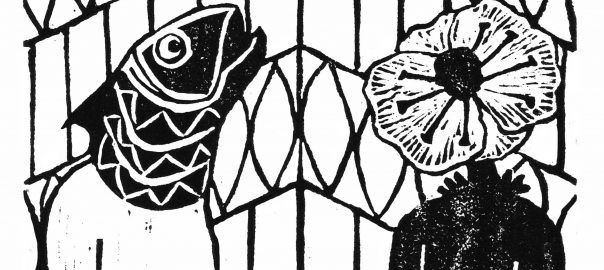
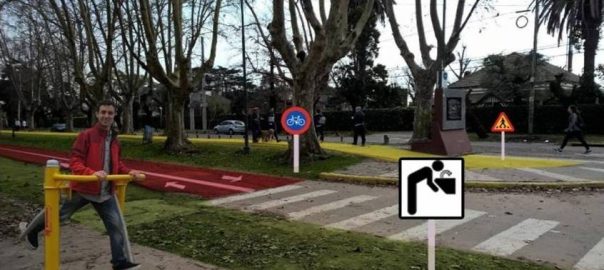
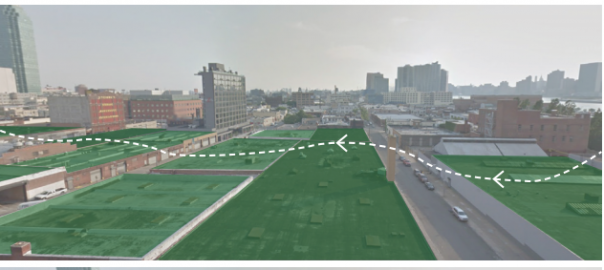
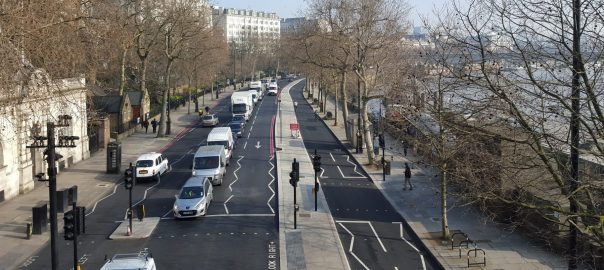
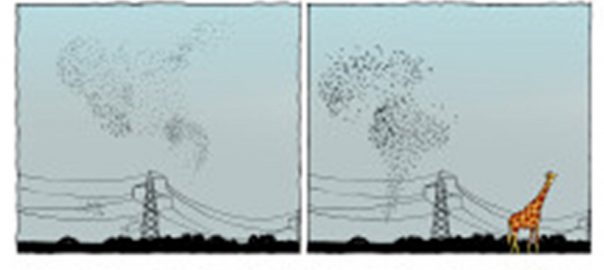
Leave a Reply